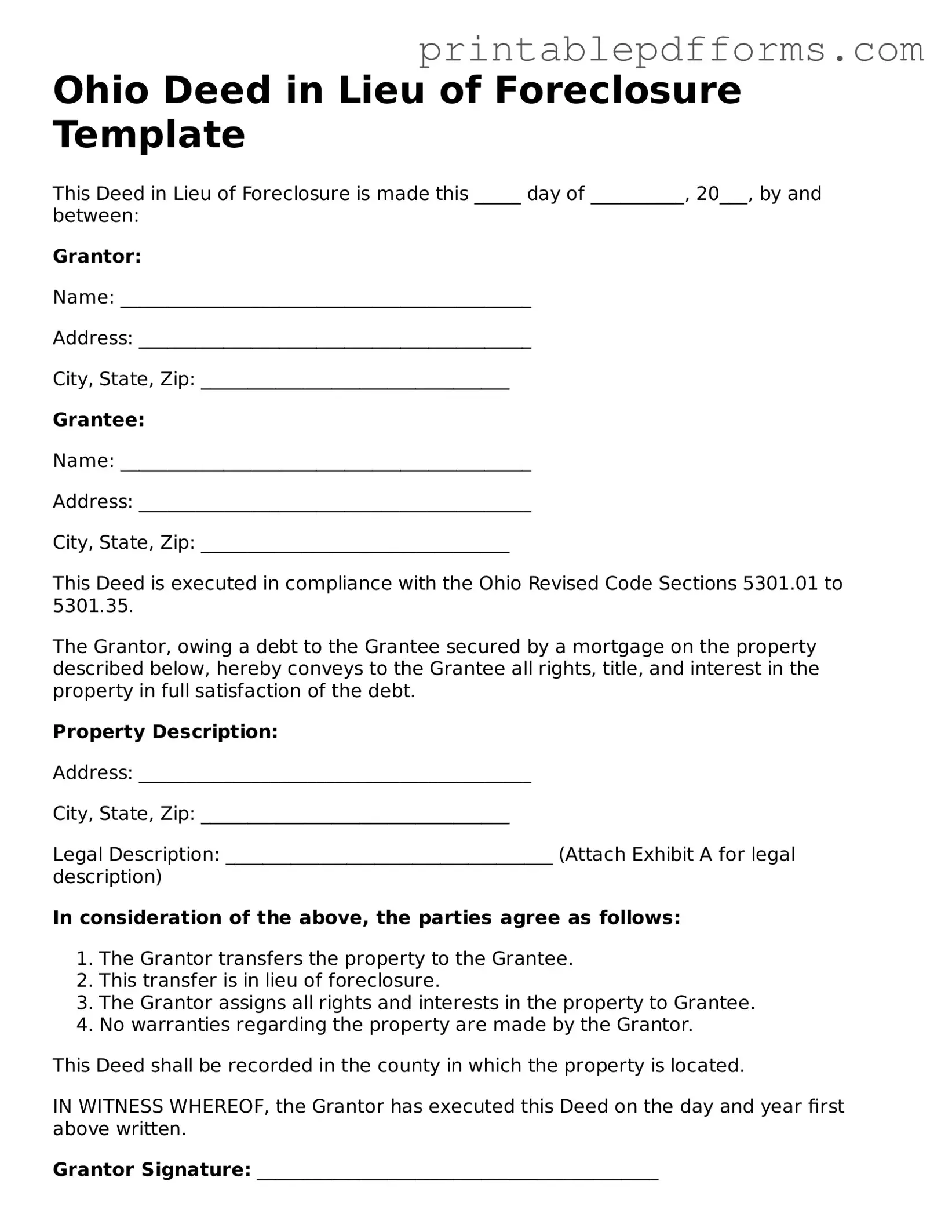Ohio Deed in Lieu of Foreclosure Template
This Deed in Lieu of Foreclosure is made this _____ day of __________, 20___, by and between:
Grantor:
Name: ____________________________________________
Address: __________________________________________
City, State, Zip: _________________________________
Grantee:
Name: ____________________________________________
Address: __________________________________________
City, State, Zip: _________________________________
This Deed is executed in compliance with the Ohio Revised Code Sections 5301.01 to 5301.35.
The Grantor, owing a debt to the Grantee secured by a mortgage on the property described below, hereby conveys to the Grantee all rights, title, and interest in the property in full satisfaction of the debt.
Property Description:
Address: __________________________________________
City, State, Zip: _________________________________
Legal Description: ___________________________________ (Attach Exhibit A for legal description)
In consideration of the above, the parties agree as follows:
- The Grantor transfers the property to the Grantee.
- This transfer is in lieu of foreclosure.
- The Grantor assigns all rights and interests in the property to Grantee.
- No warranties regarding the property are made by the Grantor.
This Deed shall be recorded in the county in which the property is located.
IN WITNESS WHEREOF, the Grantor has executed this Deed on the day and year first above written.
Grantor Signature: ___________________________________________
Date: _____________________
Grantee Signature: ___________________________________________
Date: _____________________
Notary Public:
State of Ohio
County of _______________________________
Subscribed and sworn to before me this _____ day of __________, 20___.
Notary Public Signature: ___________________________________
My Commission Expires: _______________________
